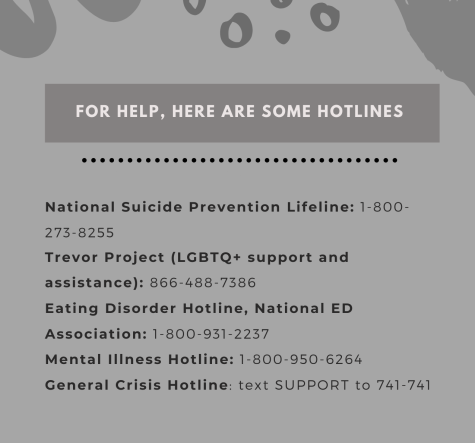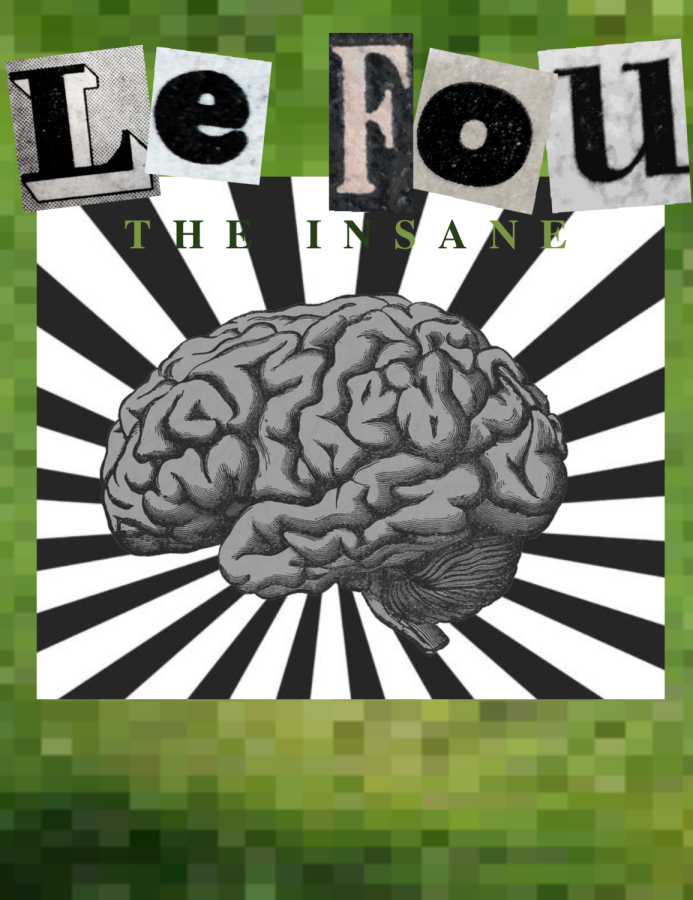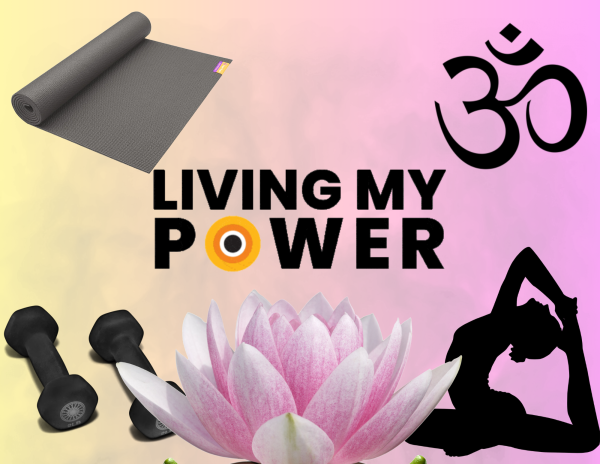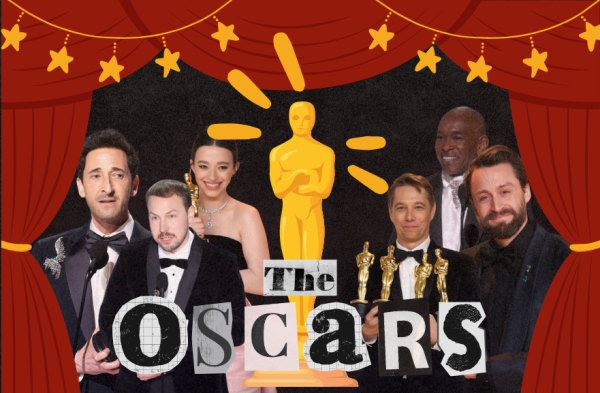Media’s Self-Diagnosing Controversy
Trigger Warning: This article briefly mentions suicide and topics regarding depression
Old style propaganda poster with a chic twist. ‘Le Fou’ is french for ‘The Insane’ or ‘The Fool’ which adds to my theme of romanticizing mental illness by making it aesthetic. (Photography: Zach Weisheit).
Social media has a vast expanse of platforms. Its endless, fast-paced content provides entertainment, storytelling, visual arts, socialization, etcetera. All throughout our childhoods, we have been taught about the dangers of social media and internet safety, but in the midst of that safe space, a mental health epidemic has been created.
Making It a Trend
With people using their platforms to share awareness of their own mental illness or disability, it creates a community for people to chat and share personal experiences, tips, or advice. Because of the fact that people outside of the intended audience—neurodivergent individuals or those with mental health conditions—view this content, it has created the issue of “trending” mental illnesses. While these safe spaces are helpful and made with good intent, people outside of the target audience get involved in them. These platforms like TikTok can be educational, but as the information spreads, it becomes normalized to emulate the behavior they’re seeing online. Subconsciously, or not, people will flock to these diagnosis titles that they see online often. Much like beauty standards, if something becomes popular and admirable, people want to become part of it.
People without anxiety, depression, borderline personality disorder (BPD), autism, obsessive-compulsive disorder (OCD), and other disorders, are fake-claiming a diagnosis to appear to be part of a group that is trendy. Surrounding yourself with content focused on being open about mental health is not bad, and can be very educational, but there is a sense of isolation that comes with it. There is an irony that comes with feeling uninteresting or outcasted while viewing content made by neurodivergent people for neurodivergent people. The internet has created the idea that being as different as possible is a necessary step to gaining attention. Having a key identifier that will set you apart from other content creators is something that people go searching for. This concept that minorities have an untouchable “privilege” was created from the birth of being ‘Chronically Online‘.
What does it mean to be chronically online? It is a term used to call people who spend too much time on the internet, usually with heavily skewed views on reality. Originally, some ‘chronically online takes’ would be seen as sarcastic, or just people trying to gain attention by purposefully saying something stupid or aggravating. The thing about identifying first hand that someone is ‘Chronically Online’, you’d have to be somewhat chronically online yourself to even begin to grasp that concept, so it’s an ironic loop. Eventually, the coined term turned into people actually speaking their beliefs, which are often things no person would say in the real world because it’s too bizarre, obscene or was initially intended to be a joke.
One example of being chronically online would be something along the lines of ‘Why is it so normalized to stop drinking when pregnant? Isn’t not wanting your baby to have disabilities kinda ableist?’ While the average person can see the statement is outlandish because it deals with childbirth safety and the safety of the mother, it is a statement that is debated fairly often on the topic of ableism and drinking. It is not ableism to practice safe drinking during pregnancy because it can put you and your child at risk, thus these chronically online habits have negatively influenced a person’s perception of real life.
Being chronically online would be an explanation as to why faking mental illnesses has become a trend in a way. When people are presented with forms of media, such as TikTok, Twitter, or Instagram, that are filled with people classified as mentally unwell, some might start to have this perspective that everyone around them has some type of illness or disability. In a real-life space and situation, the idea that the masses are widely neurodivergent or have a mental condition would not be the case.
Huntington Beach High sophomore student, Tegenn Jeffery, who is disabled themself, when asked what it feels like to witness people faking conditions while being ableists on and offline, said, “It makes me sad because the act itself of pretending is ableist in itself. I’m attached to something that disabled people have encountered for a long time. It is so disheartening to put their trust in abled-bodied people.” Frustrated, Jefferey goes on, “As a group, the [disabled] community has been shunned and treated as ‘the other’, but now so many abled-bodied people are the ones getting the attention and being listened to. You aren’t listening to disabled people about what it is to be disabled. It’s like people speaking for you, and you think it’s getting better, [but still,] they’re not listening to you, they’re listening to people who can turn [their ‘disability’] off.”
Although the rate of suicide and mental illness diagnoses are at an all-time high, the real world will not treat people with disabilities as interesting or ‘quirky’ as the current state of the media seems to portray, which is constantly putting those with true diagnoses—or in honest need of one—in a negative light. For years, those mentally ill have been painted as insane, deranged, incapable, or perhaps pathetic. Even people who are physically disabled are treated as needy or attention-seeking. Oftentimes people, especially teens, are not taken seriously when they bring their problems to the attention of a parent or doctor, getting called lazy.
This everyday life occurrence of not being taken seriously gets to be really taxing. People are so often without an understanding of other people and other struggles—and they don’t fully grasp it—that they just live their day-to-day lives assuming they know how it is to live with something permanent and different. Abled-bodied people have seemingly no self-consciousness of what a disability could entail, it’s obvious based on how real-life people act.
Jeffery spoke on this with clear frustration—this sort of thing would be frustrating because people fail to learn and understand from the outside point of view, which Jeffery expressed was just something able-bodied people tend to do.
“Today’s generation is very big on destigmatizing, the way they do that is by personalizing it.”
“When people are saying stuff like “The stairs are so hard to go up and down” and it’s like—yeah—they are, imagine being disabled and going up the stairs. It’s one of those things where I fear that these people who are trying to get attention and faking it for the trend are just going to realize it isn’t all fun in games. It’s demoralizing [disableded] people—making a mockery of people, making a mockery of something you can’t control. The thing that really grinds my gears is when they say “I understand you” No, no you don’t.”
According to Mental Health By the Numbers by National Alliance on Mental Illness (NAMI), one in six adolescents experience a mental health disorder each year in the U.S., adding to a total of 7.7 million people as of 2016. This would go to show that, in the real world, people with mental conditions are not a priority and are still widely combating ableism in real-world scenarios.
Undoubtedly, the original intentions of a safe-space community were good—whether it be a Reddit forum of advice for people with dyslexia or a TikTok account dedicated to sharing awareness on autistic traits to aid others—a lot of the time these content creators wanted to bring attention to something that might be portrayed poorly in the media, or not portrayed at all. These creators want to show awareness and destigmatize a multitude of topics for educational purposes. The way media flows and how things inevitably become trends leads to the romanticization of mental illness and other issues that are actually debilitating and harmful to some people.
A huge issue the current generation has is making things appear better than they are, whether that’s with false information or aesthetics based on depression, people gravitate toward the next trendy thing on social media. Much like clothing and makeup trends, people want to appear a certain way.
During the interview with Jeffery, he laughs and points to his jacket, “People make [disabilities and mental illnesses into] a cutesy thing, like something trendy. You know like those pins for jackets that say anxiety in pink letters, like that.”
Another big issue when it comes to mental illnesses is the competitive aspect, most of the time it’s all about “who has it worse.” This creates an unhealthy mentality like lying, faking, and invalidating others’ conditions. This leads to safe spaces being breached and making some people think they are allowed to trauma-dump in casual spaces, like a TikTok comment section.
Trauma dumping is the act of speaking about one’s own traumatic experiences in life. Normally the act of trauma dumping is to relieve stress, but in spaces like a social media platforms comment section, it can be unnecessary and potentially triggering to others online. Not everyone can consent to trauma dumping on the internet. Further, a trigger is something that can cause a physiological or physical reaction, like a panic attack. A trigger can be something like graphic images, talk of sensitive topics, or even certain sounds. Online, these lead to purposeful triggers and often lead to “trauma competitions” of those who had it worse in life when in reality, trauma is something that is not comparable. During these sorts of “competitions” one’s experiences could be invalidated or used against another to validate the severity of their own.
Representation and Reasoning
The main reason why faking mental illnesses is bad is because it breaches a safe space and also creates false information or a false narrative (much like a bad movie with poor representation might). These romanticized ideas of mental illness, over-characterized traits of specific disabilities, and badly written representation cause people to stigmatize these conditions and see them in a bad light. If the only way Bipolar Disorder was shown in the media was that it was dangerous and unsafe, the idea of people with personality disorders becomes warped. It paints the individuals who experience this poorly, which is unfair and undeserving to the person.
Another reason faking a condition is harmful is because it makes it harder for people to get diagnosed. Doctors often reject looking into a diagnosis or don’t have the credentials to diagnose some disorders. Imposter syndrome, having feelings of faking or being a fraud, is a relevant concern because it causes stress and invalidates feelings. Having someone’s concern ignored or not taken seriously by figures of authority or people online causes some to become weary about looking into a condition they feel they might have. Formal professional diagnoses are hard to get for a multitude of reasons: professionals are expensive, a household situation might be poor or unsupportive, or some may even be in constant denial for fear of faking said condition. These are all valid and reasonable explanations. A lot of the time, self-diagnosis is a step in the right direction to getting a formal diagnosis if you have access. Late diagnosis, not only in the mental field but physically as well, can be damaging or potentially harmful. There are proven physical side effects of untreated mental health conditions. Some of these include worsening mental health issues, unexplainable pain and aching, stability issues, substance abuse, trauma, and even suicide. Sometimes looking into a condition yourself can be very beneficial, don’t be afraid to aid yourself on the journey of healing or getting support.
Some couldn’t even imagine what the motive behind faking these kinds of things is, there is a fine difference in saying you have anxiety because you’re shy, but it’s another thing to actively fake a tic disorder or dissociative identity disorder (DID) (these have a very specific diagnostic criterion) just so people will view your content. There is also a misunderstanding when it comes to emotional mental disorders such as anxiety or depression. Depression can be described as a feeling of immense dread and sadness, how you’d feel after a loved one’s death. There is, however, also diagnosable chronic depression, which is reoccurring or happens for long periods of time in one’s life. Similarly, with anxiety, people feel anxious but it isn’t the same as an anxiety disorder. Being anxious is a human emotion, it happens naturally. The definition of disorder in simplest terms is “something that is different or out of the ordinary from the normal mental and physical functions.” Someone with anxiety will experience the symptoms on a heightened scale and at different rates. Some diagnostic criteria can be ‘weight-based’—calculated based on personal response to a fixed system—which means that the level and severity one might experience symptoms can determine a diagnosis.
The Weight of Media
So yes, while faking a diagnosis is terrible, there are some situations in which this happens for a valid reason. Feelings of isolation, seeking attention whether it’s getting hate or support online, and constantly having illnesses shown in media as something that’s a part of an aesthetic are some of the main reasons we see—mainly—teen girls doing things like this. When the media is a part of our everyday lives since we are young, we see two clear types of stigma around mental health: the over-glorified or over-mortified. It essentially becomes an aesthetic much like the Manic Pixie Dream Girl or Tumblr’s ‘Sad Girl’ that caters to the motifs of crying women and lettering of fake-deep poems dating farther back than Tumblr’s creation in 2007. When there is an aesthetic, there is a demographic. Of course, there are girls painting themselves as something they’re not when society has made it desirable. When all the media talks about the glory of being different as if it wasn’t a hard life to live, some seek to be a part of the new twisted beauty standard.
Social media is obsessed with presence and image, this whole loop of trends and aesthetics mixing with awareness and media like movies and books, it’s hard not to be caught up in trying to blend into the masses, even if it’s only a perception of the masses. Still, this is much different than pretending to have something more serious, like DID or psychosis. It’s no excuse to fake something like that for attention. Popularity on apps is a big part of internet culture; if that means faking a disorder then, by all means, it happens for clicks.
On a final note, understanding the use and intentions of self-diagnosis is important because there are multiple scenarios where it is necessary and needed. People should not be judged for not being able to get a diagnosis because it’s not only harmful to the individual, but also harmful to the community. There is a fine difference between attention-seeking—copying media—compared to saying you have something. There is more harm done by fake claims for the trend. It is unfair that even the easy way of getting a diagnosis, while still taking a step in the direction of help or assistance, has been ruined for people who need it. The media makes it impossible for people to have access to things they need, things that could make people’s lives easier.

Your donation will support the student journalists of Huntington Beach High School. Your contribution will allow us to cover our annual website hosting costs.
Thank you for supporting our program!







